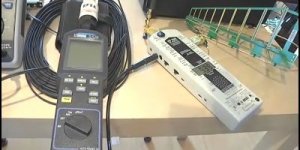This is a modal window.
| Titi Tudorancea TV / Documentaries |
Space Weather Vocabulary
Space, Weather
Suitable for all ages, this introduction to space weather covers vocabulary like coronal mass ejection (CME), solar wind, and solar flare. It also outlines potential effects of solar storms on our planet.
Just as the sun is part of weather on Earth; it also affects weather in space. The sun creates solar wind by steadily releasing a flow of plasma particles in all directions around it. Sometimes the sun gives of a flash of light in x-rays. This is known as a solar flare.
When mass of burst of particles explode into space, we call it a coronal mass ejection or CME. When a CME is directed toward earth it hits the magnetosphere, the magnetic field around our planet that protects us. If the storm is large we may even get to enjoy a light display in the sky called the auroras.
In space, satellites may be damaged, and astronauts should take cover. On earth, people do not feel any physical effects. You may loose electricity in some areas. Polar flights may be rerouted and satellite services may be disrupted.
While these situations aren't ideal, they are rare and fixable. This is why we will continue to study the sun and its interactions with earth, and the solar system.
Credit: NASA's Goddard Space Flight Center
Lead Animator: Genna Duberstein (USRA)
Video Editor: Genna Duberstein (USRA)
Narrator: Chris Smith (HTSI)
Producer: Genna Duberstein (USRA)
Project Support: Scott Wiessinger (USRA), Karen Fox (ASI)
Country of origin: United States
Language: English
Released on: February 26, 2013

Subscribe now to get unrestricted access to all resources, in all languages, throughout this web site!
Subscription Form
YOU MAY ALSO LIKE






Subscribe now to get unrestricted access to all resources, in all languages, throughout this web site!
Subscription Form